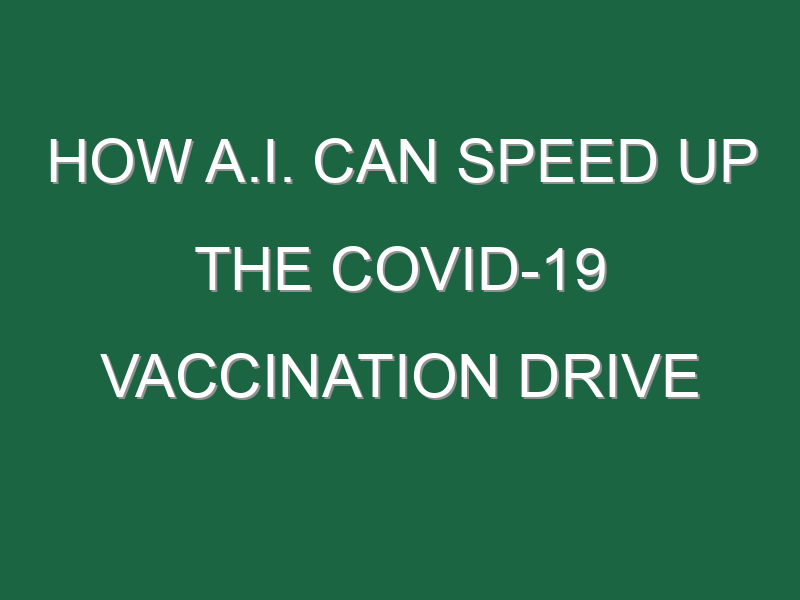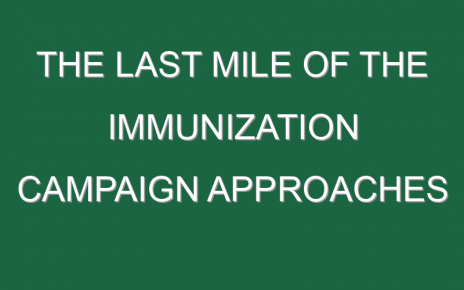Happy New Year everyone! A warm welcome back too to my Fortune “Eye on A.I.” partner Jonathan Vanian, who has just returned from paternity leave. Jonathan helped compile the news items, research, and Brain Food sections for this week’s newsletter.
I spent some time over the last few weeks reporting a story, which will be published soon, on how companies hope to use A.I. to help the COVID-19 vaccination drive. The global vaccine rollout, which is now underway, although progressing much more slowly than most would like, will be among the most important stories this year and it is one in which A.I. may play a role in at least four distinct areas:
•˘Triage and impact modeling. Figuring out which population groups should be vaccinated in which order to end the pandemic quickly.
•Demand forecasting. Determining where and when to ship doses to get as many people inoculated in the least amount of time.
•Supply chain management. Monitoring the vaccine production and delivery network for bottlenecks.
•Post-vaccination surveillance. Watching for signs of any adverse side effects from the vaccine that may not have been found during clinical trials.
Today I want to talk about just one aspect of this: demand forecasting. In my reporting, I spoke to Benjamin Fels, who is the co-founder and chief executive of a small company in Boston called Macro-Eyes. Fels is an intriguing character. With pale skin, piercing blue eyes, a receding hairline and a bushy, black beard, he reminded me of a 19th century missionary. And he is on a mission of sorts. His goal: to improve healthcare, especially for those in low and middle-income countries.
Fels first came across machine learning while working at a hedge fund in Chicago and London. He was intrigued by the idea that an A.I. system could be fed many disparate datasets, and, by sniffing out a few faint signals in each of them and then piecing together robust predictions that traders could use to make money in the financial markets.
But Fels didn’t want to just do well. He wanted to do good too. And he wondered what else the powerful machine-learning systems he was using may be able to do if applied to different kinds of data. “There must be, I naively thought, other domains where this is important,” he says.
He teamed up with Suvrit Sra, an MIT computer scientist, and together the two decided to tackle healthcare. “Our basic hypothesis was that healthcare, the practice of medicine, the whole issue of how you deliver healthcare, is an extended act of pattern recognition,” Fels says.
Their first customer after founding Macro-Eyes was Stanford University’s health system. Like many healthcare practices, one of Stanford’s biggest problems was no shows—patients who didn’t turn up for appointments. Macro-Eyes built a system that could reliably predict which patients were likely to miss appointments. Critically, it could also suggest alternative times and clinic locations that would increase the odds that a patient would show up.
The company has since applied similar technology in locations from Arkansas to Nigeria, with support from the U.S. Agency for International Development and the Bill & Melinda Gates Foundation, among others. “We’ve gotten very good at predicting health seeking behaviors,” Fels says.
So what does this have to do with the COVID-19 vaccine? Well, in Tanzania, Macro-Eyes worked on a project to improve childhood immunization rates. Its software analyzed how many vaccine doses to send to each vaccination center. Critically, it also sussed out which families might be reluctant to inoculate their children but could be persuaded with the right message and an immunization center located in a convenient place. Using the software, the Tanzanian government was able to improve the efficiency of its vaccination program by 96% and reduce wasted vaccine doses to 2.42 per 100.
The lessons of Macro-Eyes in Tanzania are directly applicable to the COVID-19 vaccination effort, Fels says. Ensuring the efficiency of that vaccination program is essential because demand is likely to outstrip supply globally for some time and, particularly in low-income countries, each dose will be precious. Concerns about cold storage will be an issue in many places, even with vaccines such as AstraZeneca’s that can be kept at normal refrigerator temperatures. “We can’t afford to throw away 30 doses because we sent them to wrong place,” Fels says. “But if we allocate the vaccine strictly according to population we are going to severely under-allocate to some sites and severely over-allocate to others.”
To figure out demand, he says, Macro-Eye’s A.I. software looks at data sets that include geospatial data, especially satellite imagery, information on the number of mobile phone users in a given area, government and health system records if they are available, and sometimes even social media posts.
The company is used to having to get creative about the data it uses. In Sierra Leone, which lacked health data, the company had to figure out how to correlate information about local school infrastructure to make predictions about the quality of local health centers. It turned out that the teacher-pupil ratios alone were enough to predict with 70% accuracy whether the local clinic had access to clean water, Fels says. “Any one of these data sources on its own is usually of marginal value,” he says. “But if you combine them you start to get an accurate picture.”
That’s a good tip for using A.I. in business, as well as an example of A.I.’s use in the business of doing good. Let’s hope the new year brings many more. And with that, here’s the rest of this week’s A.I. news.
Jeremy Kahn
@jeremyakahn
[email protected]




